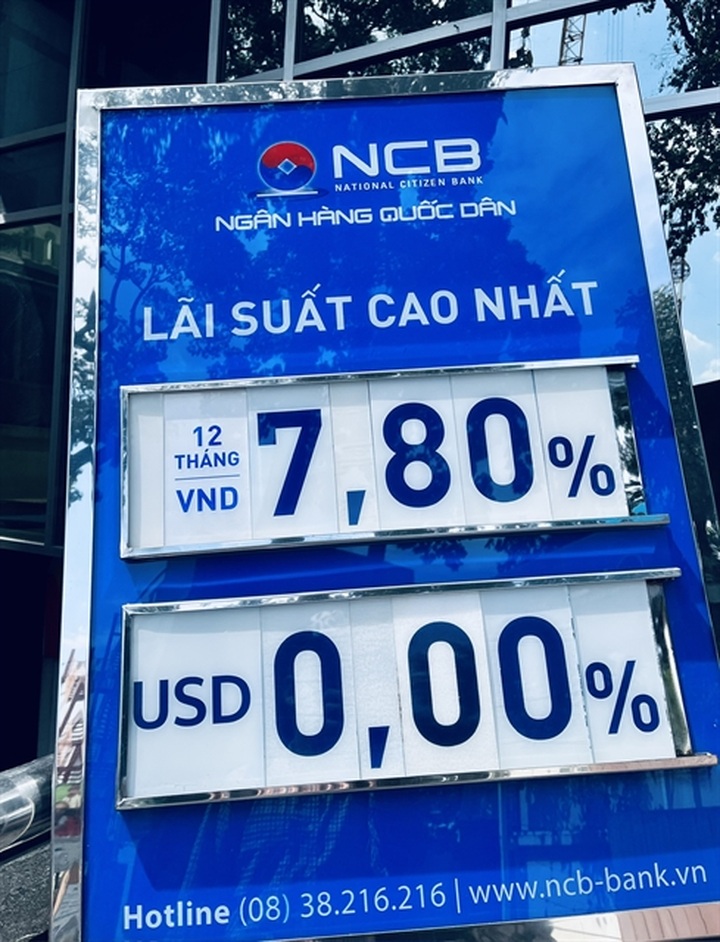Agribank, BIDV, Vietcombank, and Vietinbank continue to pay the lowest rates in the market, around 6 per cent for six to less than 12 months and around 7 percent for 12 months.
Meanwhile, larger private banks have cut their 12-month rates to below 8 percent.

The deposit interest rate list at a National Citizen Bank (NCB) branch on Phạm Ngọc Thạch Street in District 3 on May 18. VNS Photo Bồ Xuân Hiệp
MB, SHB, Techcombank, ACB, VBBank and TPBank pay between 7.3 percent and 7.9 percent for 12 months.
Smaller banks have also cut deposit interest rates significantly since last month.
For 12 months deposits, National Citizen Bank’s (NCB) rate has fallen to 7.8 percent from 7.9 percent; Kienlong Bank to 8 percent from 8.2 percent; and Saigon Bank to 7.8 percent from 8 percent.
Deposit interest rates have been plummeting, especially after the central bank cut the operating interest rate in March and April.
At the end of 2022, almost all private banks offered more than 9 percent for 12-month deposits.
Smaller banks even paid more than 10 per cent.
The high deposit interest rates pushed up lending rates to 13-14 percent, putting huge pressure on enterprises.
According to VNDirect Securities Company, deposit interest rates will keep falling until the end of 2023, tracking sluggish credit demand due to an economic recession and the sluggish real estate market.
Lending rates remain high
While deposit interest rates keep falling, most firms are complaining high loan interest rates of more than 10 percent are causing difficulties for them to maintain operations.
The State Bank of Việt Nam (SBV) has attributed the high rates to high inflation and potentially increasing non-performing debt in the coming time.
Speaking at a recent meeting, Nguyễn Thị Hồng, SBV’s governor, said Viet Nam has a high level of economic openness, so that domestic interest and exchange rates are hugely affected by global financial and monetary changes.
Interest rates globally were high last year and earlier this year as central banks around the world continued to tighten monetary policies, making it more challenging for Việt Nam’s central bank to cut the rates.
While the yearly inflation target was under 4.5 percent, core inflation in the first four months reached 4.9 percent.
A circular issued last month allowing lenders to extend loan repayments for businesses facing financial hardships has caused difficulties for banks to ensure they can pay back depositors.
A number of smaller banks have been maintaining deposit interest rates high to attract and retain depositors, contributing to the issue.
According to the central bank, the economy depends on bank loans too much, which has caused interest rates to be too high.
The credit-to-GDP ratio was over 125 percent last year, the central bank said in a report.
Most banks have been mobilising short-term deposits to give out long-term loans while many borrowers are currently struggling to pay back loans, putting pressure on lending interest rates.
Nearly 90 percent of the deposits are short-term while more than 50 per cent of credit is mid- to long-term, imposing a risk to the banking system, said the report.




















